
Wild as ever.
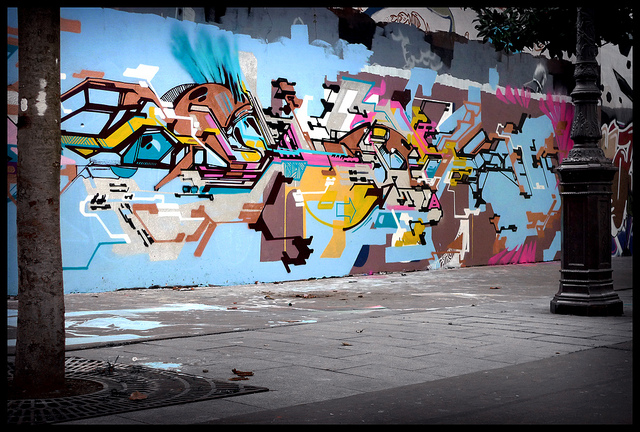
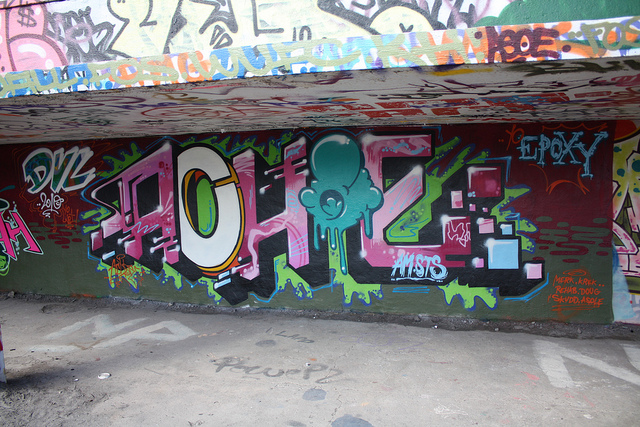


Photos by Achoe, Soke, Suede, and Thias
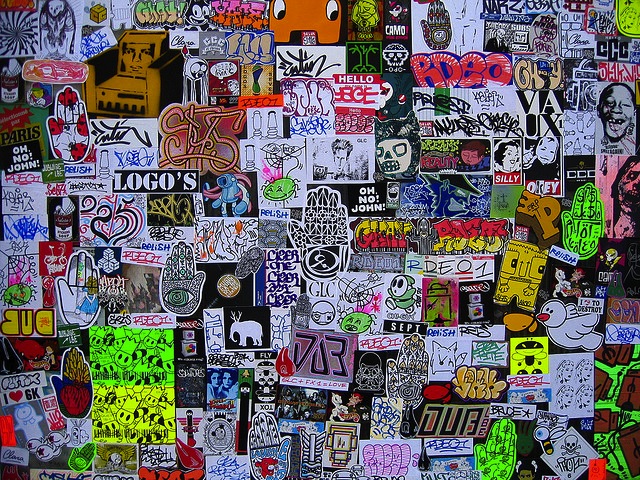
It almost goes without saying that Martha Cooper has been one of the most important documentarians of graffiti culture for the last few decades. Her urban and hip hop culture photography is iconic. More recently, Martha Cooper has expanded her graffiti documentation to the photography and collection of stickers. Her two latest books, Going Postal and Name Tagging, spotlight sticker art made with postal labels and Hello My Name Is stickers.
On Saturday from 1-3pm, Martha will join sticker fanatic and author of one of my favorite books, DB Burkeman, for a book signing at a sticker exhibition curated by DB. The show, STUCK-UP: A Selected History of Alternative & Pop Culture Told Through Stickers, is at Chicago’s Maxwell Colette Gallery and features stickers from a top-notch roster of artists.
I would gladly hop on the next plane and see this exhibit in person, but that was not an option so instead I asked Martha Cooper a few questions.
Caroline: In your book Name Tagging, you explain how you began appreciating stickers after you bought your first digital camera. What was it about the digital medium that initiated this interest in stickers?
Martha Cooper: Pre-digital, I rarely took my heavy, bulky Nikon out unless I was headed for something specific to shoot. It cost about 50 cents for film and processing every time I clicked the shutter. So although I had noticed stickers for years, I hadn’t looked at them closely and hadn’t bothered to shoot many.
My first digital camera was a little Olympus that I could easily carry around with me all the time. It had a very good close-up lens and performed well under low light. Once I had the camera, it didn’t cost any more to keep shooting so I was free to take as many photos as I wanted. Transitioning from analog to digital was a challenge. Shooting stickers was an unstressful way to practice new technology with interesting subject matter.
C: What led to you removing and collecting stickers off the street, rather than just photographing them?
MC: I’ve always been a collector. I like to look at different examples of things. At first after shooting a nice sticker, I printed it and saved it in an album. That began to feel unsatisfactory–I wanted the original. I only shoot and collect hand drawn stickers and this is pretty much the only form of graffiti and street art that can actually be removed from the street. Of course writers have criticized me for this and I know this is a dubious defense, but someday I hope to have a museum sticker exhibit.
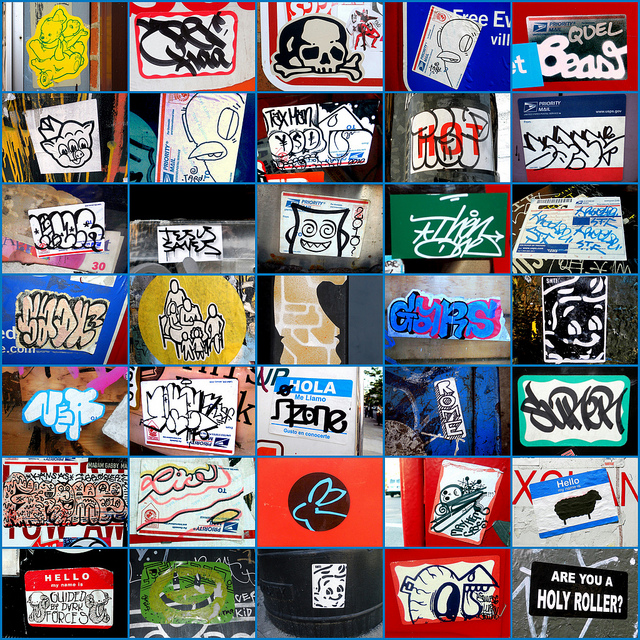
Continue reading “Martha Cooper interview”
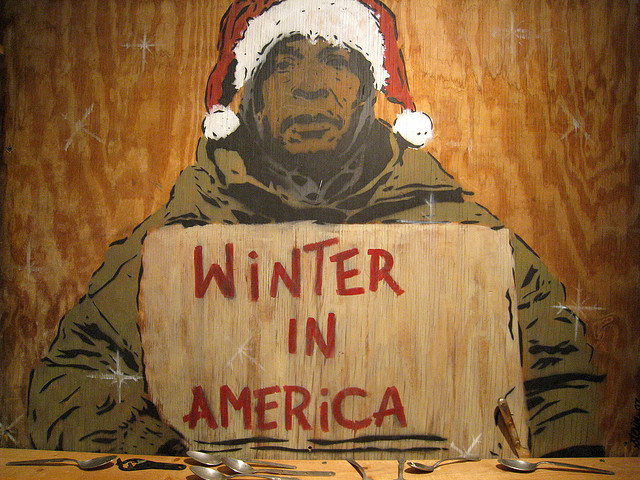
If Chris Stain isn’t already in your street artist repertoire, this is someone you need to know. Baltimore bred and current New Yorker, Stain transitioned from graffiti writing in his early days to the stencil portraits and paste-ups that have made him known around the world today. The beauty in Stain’s work comes from his ability to capture the soul and often overlooked tenderness of the urban world.
1. Describe one of your first experiences with graffiti.
I got into graffiti after seeing the movie Beat Street in 1984. The only type of paint my friends and I had was Testors model car paint. The cans were small and you couldn’t get far with them but it was easily concealable.
We all lived in rowhomes in Balitmore so our main targets were houses on the end of the block because they had the biggest open wall space and traffic on the main streets could see our work. We also wrote in the alleys behind the houses as well, decorating the backs of peoples cinderblock fences. Once the neighbors caught on to who was writing all over the neighborhood we moved on. We really had no idea what we were doing. We mostly just wrote our new chosen aliases in a form of cursive and printing that we combined. Like the beginning of anything new it was incredibly exciting.
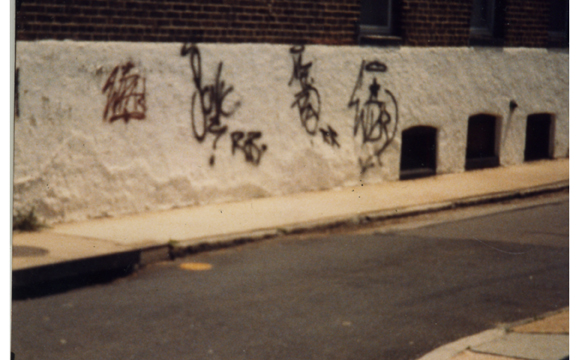 Continue reading “Interview with Chris Stain”
Continue reading “Interview with Chris Stain”
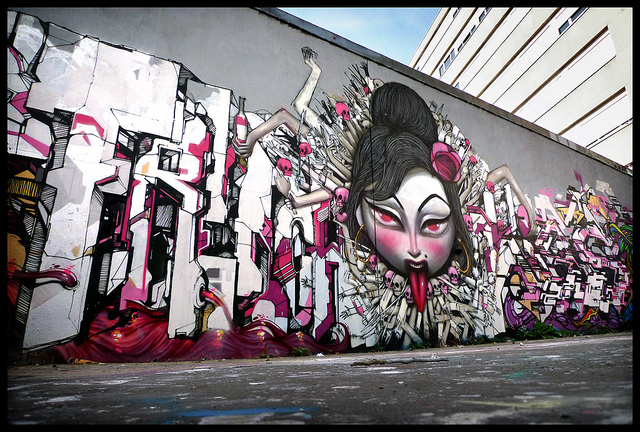
Brief break for holiday- Let the wild resume! Full force and feral.
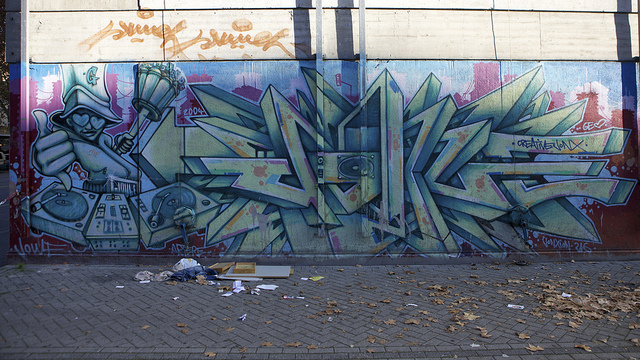
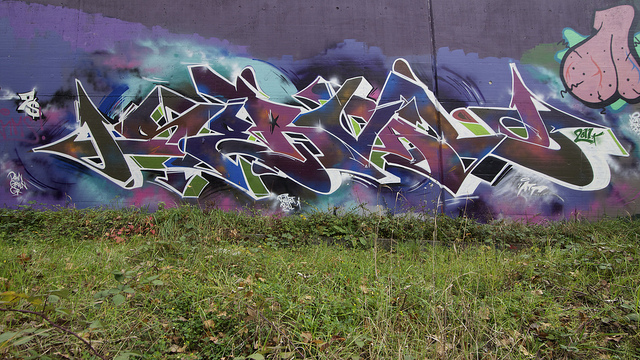


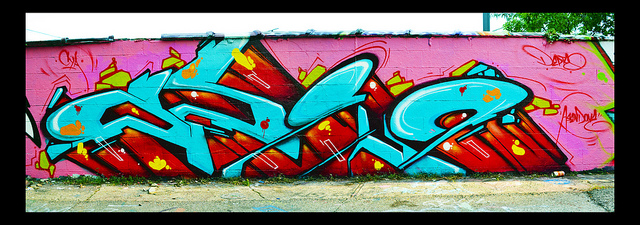
Photos by Abstract Rationality, Datachump, SÖKE and Thias
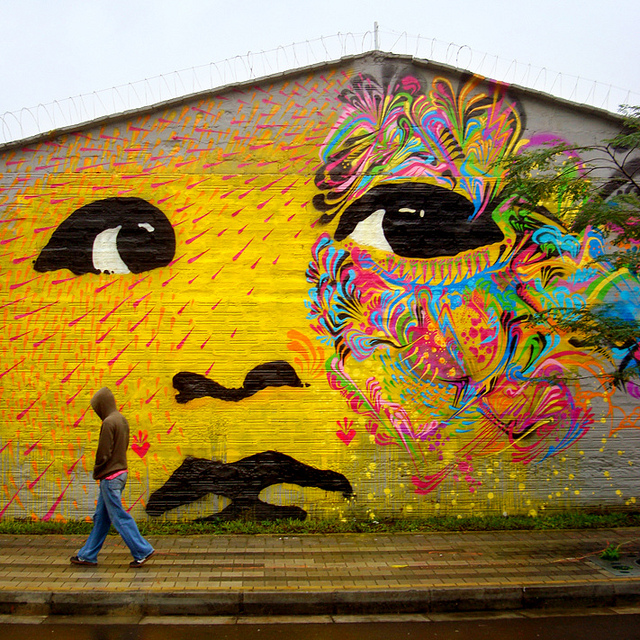
Stinkfish is an artist from Bogota, Colombia and personally, one of my favorites. He does a little of everything from rollers to posters, stickers to straight up tagging, but he’s renowned for his vibrant portraiture. I was lucky enough to get to ask him a few question.
How long have you been with your crew, APC?
I created the Animal Power Culture (APC) with my friend Aeon (aka Lorenzo Masnah / Third World Pirat / El Peor –www.masnah.tk) at some point, I do not remember exactly, between 2006 and 2007. We came up with the idea of make up a crew without rules or defined styles, which could grow and grow as a large family of animals of different races and backgrounds. There were only the two of us for a while; later, friends from different cities and countries join. Today we are about 30 animals in Colombia, Mexico, United States, Brazil, Venezuela, Guatemala, Spain, Holland and Argentina.
What did you like to do as a kid?
My childhood was spent between the typical TV addiction of the 80’s and 90’s, playing soccer outside my house and going for bike rides around the neighborhood. But one thing I remember with special affection are the cameras that my dad bought and sold frequently, I could spend hours “playing” with them, discovering how they work: framing, focusing.
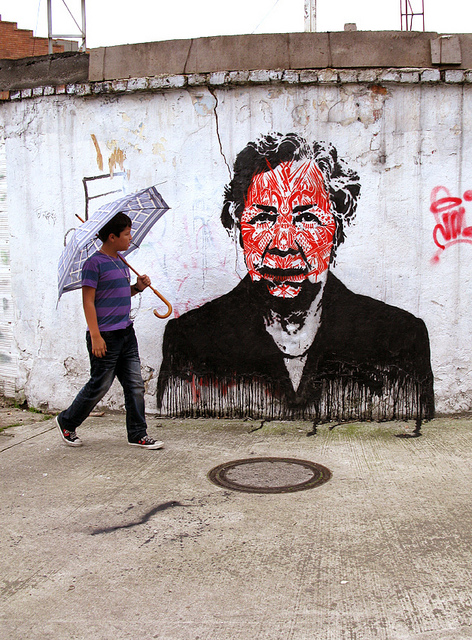
What were your first few experiences with vandalism like?
Destruction of street furniture, but those are fuzzy memories of confusing days.
Was there anything specific that inspired your involvement in street art? Is there anything now that inspires you to keep doing it?
I liked being on the street and spent hours walking around aimlessly. I also made images that were stored on the hard drive of my computer without anyone to see them. But I wanted to show them to as many people as cheaper as I could. Then it all started. Now days I’m in this for the same reasons and because I believe in the sincerity of graffiti, street art or whatever you want to call it. I believe in doing what I like out of conviction, without permission. Doing what I wish to do with what I have at hand in the place I want and when I want to, without thinking about health insurance, a salary or a pat on the back.
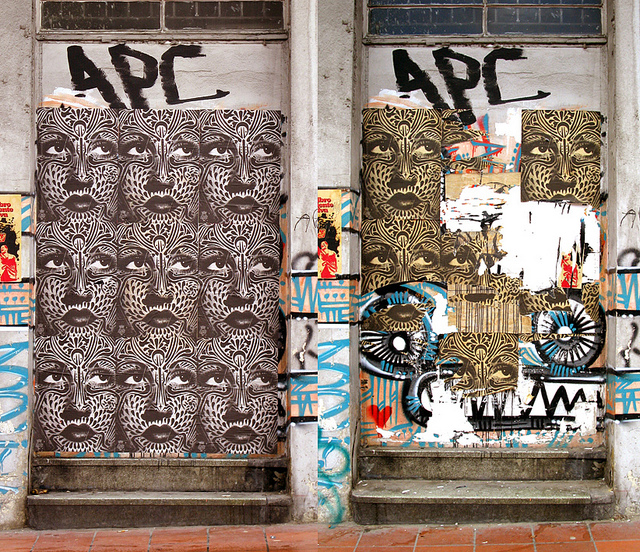
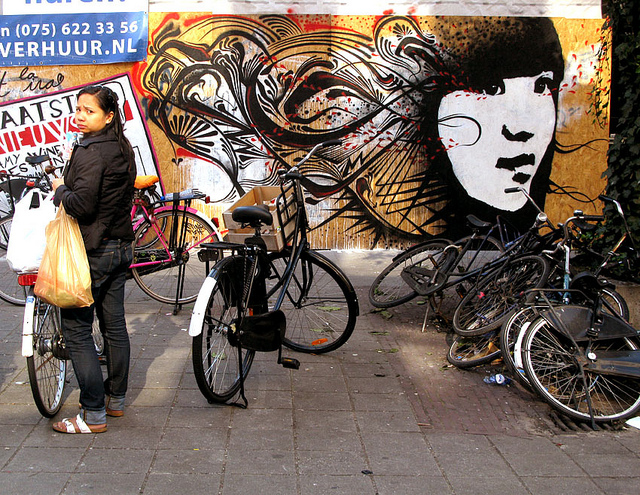
The style you have is very recognizable. Have you always painted in this way?
I have used different media and techniques during these years of work in the street: stencils, stickers, posters, brushes, rollers, fire extinguishers, extenders, chalk, etc.. For a long time I worked with stencils until I decided to leave it almost entirely. Then I began to paint with spray, brushes and rollers, and make quick tags and characters. Later I return to stencil with new ideas, looking for other stories, closer ones. I think that is a part of what I do today but I dont think I have one only style. I like to create images in different ways, with the tools I have available in the place where I am. I do not like being tied to one way of doing things.
What do you enjoy doing when you’re not painting?
Walking is one of the things I like to do. Walking aimlessly with loud music and accidentally find coincidences of sound and movement, between the lyrics of songs and what happens every day.
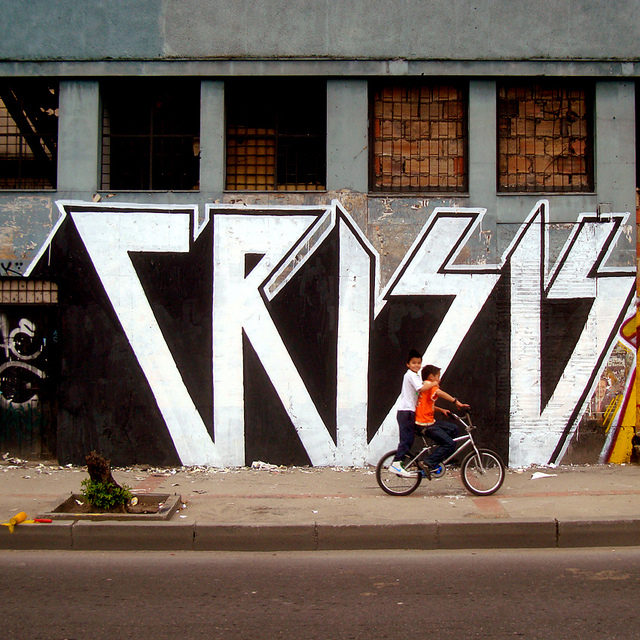
What’s the best part after you finish a piece?
The best part is that moment when I finish packing everything and start to walk away from the wall with complete certainty that I painted the wall I want as I wanted, at the right time and without any permission.
Some of the faces in your portraits are people you don’t know. Has this ever led to anything interesting?
Most are people I dont know. I have my camera always at hand and all the time I take pictures of unaware people. I also found pictures abandoned on the floor and others I have bought in street markets. The interesting thing for me is to give new life to these portraits, make a new larger scale picture on a wall, make them travel.
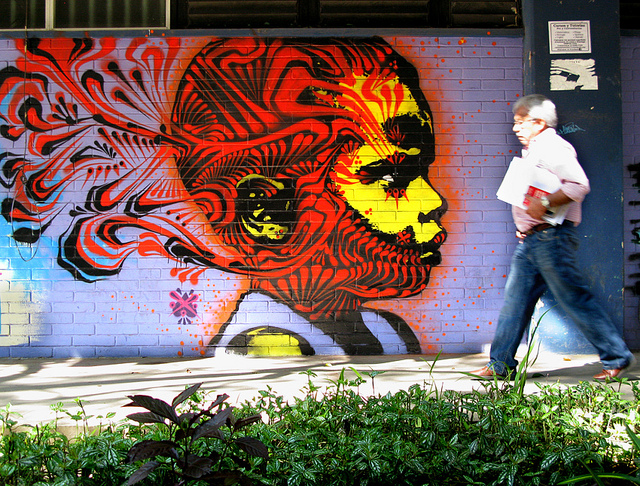
What countries have you put up work in?
Colombia / Mexico / Guatemala / El Salvador / England / Spain / Holland
What has been the greatest experience you’ve had doing street art?
To know the thoughts and feelings of some people.
What has been the worst experience?
To know the thoughts and feelings of some people.
Do you have any goals for 2012?
Paint and travel as much as possible / publish a new fanzine.
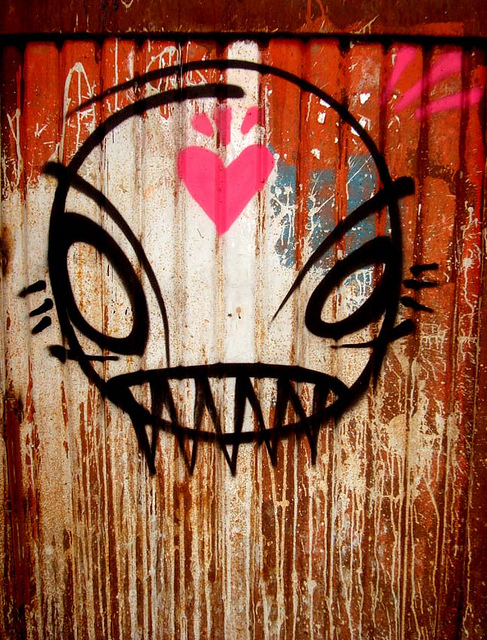
Photos by Stinkfish
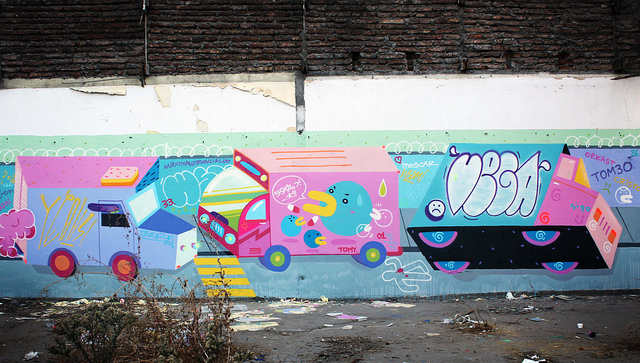
WSDM Crew (or Wisdom Crew) from Santiago, Chile is comprised of seven members. Brako, Tombo, Benzo, Pohyo, Nadao , Fury and Gumy.
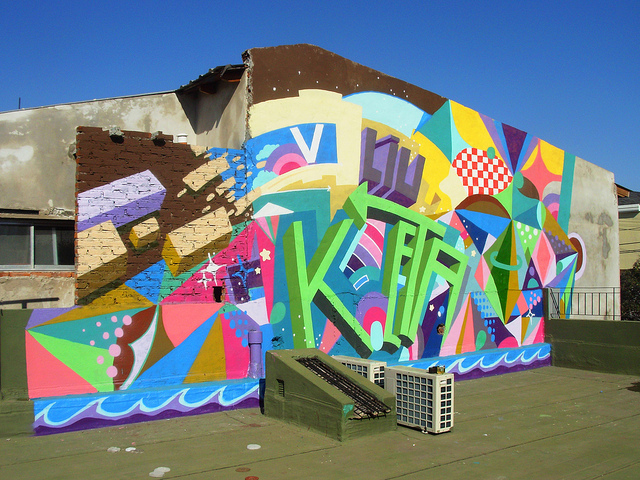
“All our graffiti are made with a mix of the worst paint in the world and some mtn cans that we can get sometimes” says Gumy.
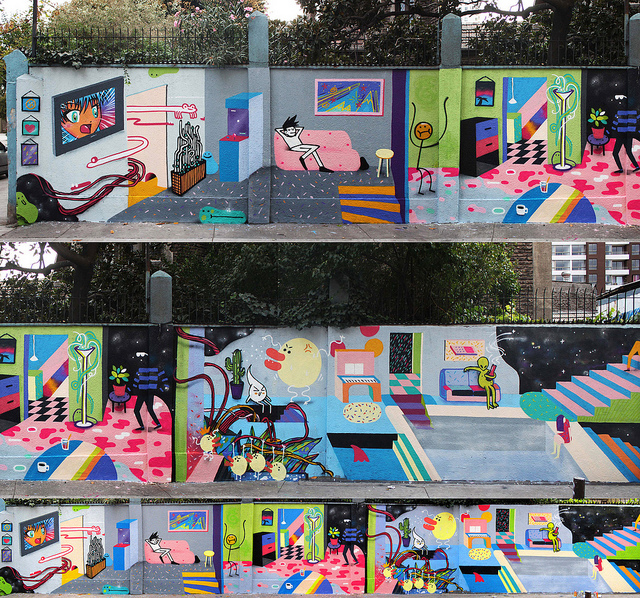
The crew is also in the midst of putting together book about South American graffiti.
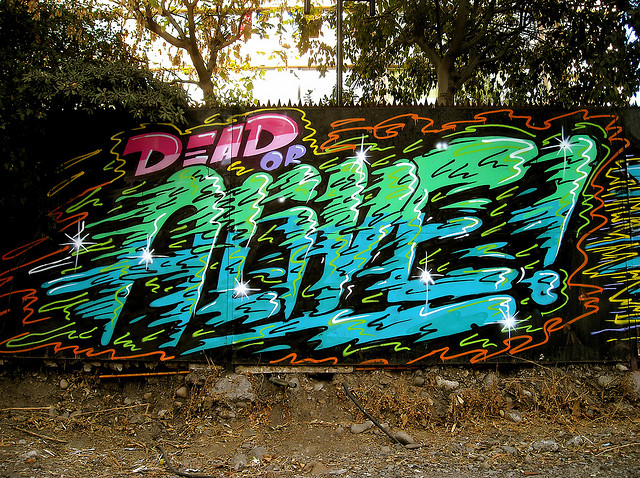
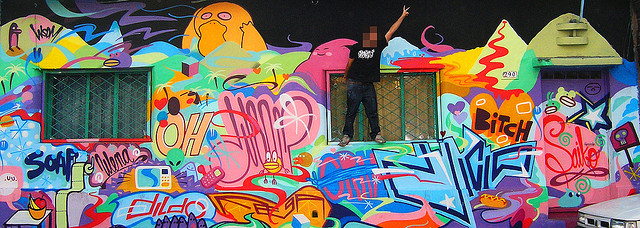
Photos by WSDM Crew